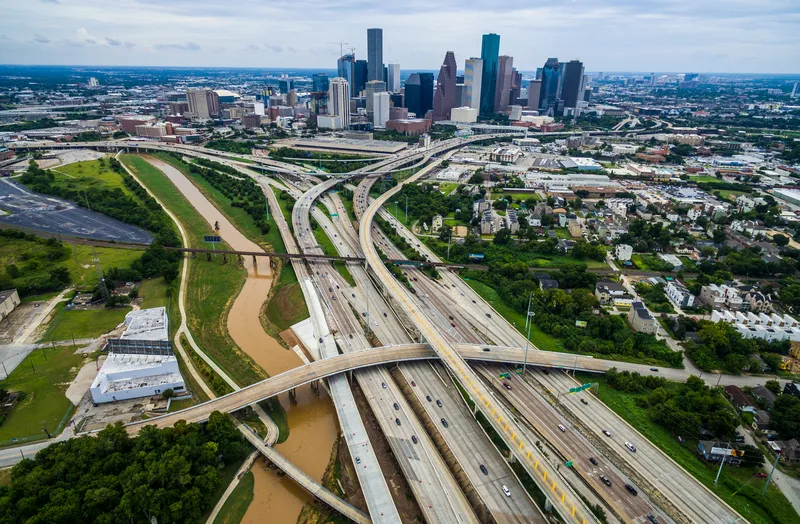A provision in the Grow America Act, introduced to Congress last month by Secretary of Transportation Anthony Foxx, proposes lifting a decades-old ban on tolling existing interstate general purpose lanes.
According Daniel Papiernik, HNTB Corporation's mid-Atlantic toll services leader, writing in Roll Call, recent opposition to the proposal is short-sighted. He claims that relying on revenues derived from the gas tax is simply an unsustainable way of funding the nation’s aging roads, bridges and tunnels
May 30, 2014
Read time: 3 mins
A provision in the Grow America Act, introduced to Congress last month by Secretary of Transportation Anthony Foxx, proposes lifting a decades-old ban on tolling existing interstate general purpose lanes.
According Daniel Papiernik,6278 HNTB Corporation's mid-Atlantic toll services leader, writing in Roll Call, recent opposition to the proposal is short-sighted. He claims that relying on revenues derived from the gas tax is simply an unsustainable way of funding the nation’s aging roads, bridges and tunnels now and for the foreseeable future: “With the math not adding up (incoming revenue, costs of infrastructure maintenance and upgrade), tolls deserve to be part of every transportation policy discussion. States should be allowed to consider all options including the use of tolls on interstates to help cover the funding gap.”
Citing a nationwide HNTB poll, Papiernik makes the case for allowing US states to toll interstate highways. The survey of 1,000 drivers last year found that 71 percent would be willing to pay a toll if it resulted in faster, more reliable transport to their destination. The survey also found that 70 percent favoured their state’s department of transportation having the option to add tolls to major structures to keep them in good shape, exactly what Grow America proposes.
He goes on to say that traditional gas taxes have remained unchanged since 1993 and don’t have the same purchasing power as they once did. Meanwhile, the resiliency of the nation’s road, tunnel and bridge infrastructure is suffering. A recent analysis of 2013 National Bridge Inventory database maintained by the324 US Department of Transportation showed that each day, almost a quarter-billion cars, trucks and school buses cross more than 63,000 structurally compromised bridges.
He quotes examples of how toll revenues are already being used to support transit, such as the Dulles Toll Road multi-modal corridor and the I-15 in San Diego, which uses toll revenues to support rapid bus transit along the same corridor, and points out that advances in technology are making distance-based pricing viable.
Papiernik says, “New technologies and techniques present state and federal policy makers with tools to help solve a vexing problem: the maintenance and improvement of transportation infrastructure that is vital to our nation’s economy.
“Relying on Congress during an election year to replenish the Highway Trust Fund with an increase of the gas tax or closure of tax loopholes is simply unrealistic. Add to this the evolution of technology which enables tolls to be collected safely and efficiently without stopping and it’s time to face reality and come out from behind the veil of an anti-toll animus.
“All options are, and should be, on the table as transportation leaders discuss creative approaches to improve our mobility and our economy. President Barack Obama and his administration are facing reality: Real problems with our infrastructure require real solutions including real choices.”
According Daniel Papiernik,
Citing a nationwide HNTB poll, Papiernik makes the case for allowing US states to toll interstate highways. The survey of 1,000 drivers last year found that 71 percent would be willing to pay a toll if it resulted in faster, more reliable transport to their destination. The survey also found that 70 percent favoured their state’s department of transportation having the option to add tolls to major structures to keep them in good shape, exactly what Grow America proposes.
He goes on to say that traditional gas taxes have remained unchanged since 1993 and don’t have the same purchasing power as they once did. Meanwhile, the resiliency of the nation’s road, tunnel and bridge infrastructure is suffering. A recent analysis of 2013 National Bridge Inventory database maintained by the
He quotes examples of how toll revenues are already being used to support transit, such as the Dulles Toll Road multi-modal corridor and the I-15 in San Diego, which uses toll revenues to support rapid bus transit along the same corridor, and points out that advances in technology are making distance-based pricing viable.
Papiernik says, “New technologies and techniques present state and federal policy makers with tools to help solve a vexing problem: the maintenance and improvement of transportation infrastructure that is vital to our nation’s economy.
“Relying on Congress during an election year to replenish the Highway Trust Fund with an increase of the gas tax or closure of tax loopholes is simply unrealistic. Add to this the evolution of technology which enables tolls to be collected safely and efficiently without stopping and it’s time to face reality and come out from behind the veil of an anti-toll animus.
“All options are, and should be, on the table as transportation leaders discuss creative approaches to improve our mobility and our economy. President Barack Obama and his administration are facing reality: Real problems with our infrastructure require real solutions including real choices.”










